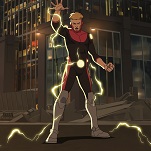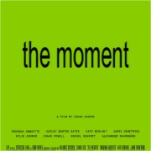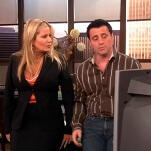The Manitou (1978)
Director: William Girdler
Tagline: “Evil does not die… It waits to be reborn!”
Plot: Karen Tandy (Susan Strasberg, daughter of famed acting coach Lee Strasberg) has a problem.
Karen Tandy… has a neck fetus.
There probably isn’t a “right way” to tell a story about a woman who gets impregnated—in her neck—by the reborn spirit of a powerful Indian medicine man, but The Manitou does do an excellent job of demonstrating many of the wrong ways. For one, tone is important. The movie opens with two doctors discussing Karen’s condition while she sits patiently in the waiting room. It’s deadly serious, and that’s a mistake, because the situation is so clearly, palpably absurd. No one even acknowledges that absurdity, which makes it all the more unreal.
It gets worse when we meet the movie’s hero, Harry Erskine (Tony Curtis), the Max Bialystock of psychic con men. Harry spends his days bilking old ladies out of their savings by feeding them tarot-card readings that make them feel special, all while hiding his own real gifts in ways that don’t really ever become relevant to the plot. Harry also has a past with Karen, which is why she calls him when the stress of the whole neck-fetus situation becomes too much to bear. They have a wonderful day together, followed by the inevitable tarot reading and reveal of the Death card. That night, Harry hears Karen repeating a strange phrase in her sleep: “Pana-witchy-salatoo.”
The phrase means something, but it’s such a ridiculous collection of syllables that the actual meaning is essentially irrelevant. Which is really the problem at The Manitou’s delightfully ridiculous heart. (Well, “heart” is a bit much. Appendix, maybe.) Karen’s first growth-removal surgery goes badly when some unseen presence forces the head surgeon to cut his own hand. Harry starts investigating non-medical causes, and a lot of information gets delivered through a variety of sources, including but not limited to Burgess Meredith as the man who wrote the book on Indian spirit forces. Michael Ansara shows up eventually as “good guy” medicine man Johnny Singing Rock, serving in the Max Von Sydow capacity as a wiser, more experienced occult figure who still may not have all the right answers:
Karen’s neck-baby continues to develop until finally it turns the skin of her back into tearable latex. Then comes the birth of Misquamacus, a figure so terrifying in Native American spirit lore that even the seemingly unflappable Johnny is given pause. Due to an earlier confrontation with a laser, Misquamacus arrives on the scene as a stunted, 3-foot-high dwarf with a rubbery (one suspects literally) face and cheap yellow contacts on his eyes. He growls and snarls and freezes the hospital floor with fake snow and plastic icicles before Harry is able to use the power of computers, modern technology, and Karen’s tastefully obscured breasts to send Misquamacus and the forces of evil back to oblivion.
Key scenes: The day of Karen’s first operation, all hell breaks loose. While Misquamacus is defending himself from unwanted scalpel exposure, Harry takes in a client, and then this happens:







































